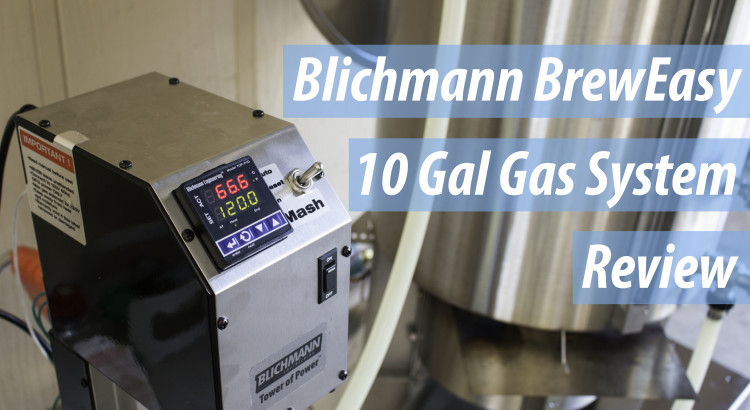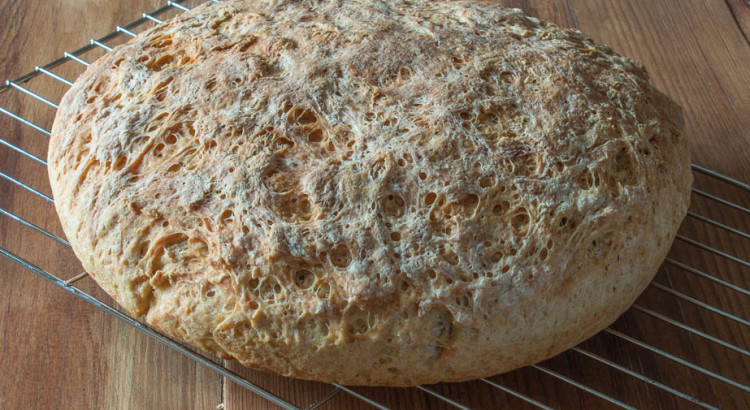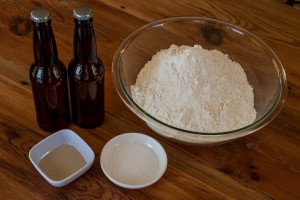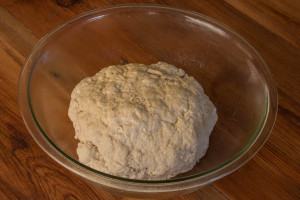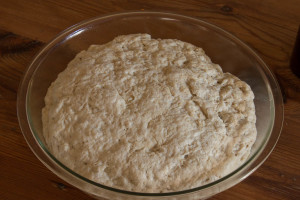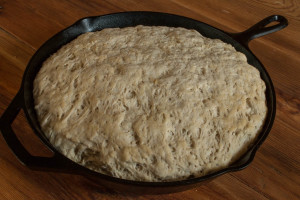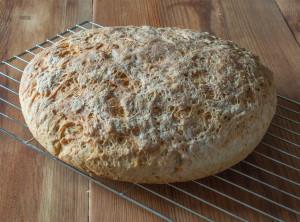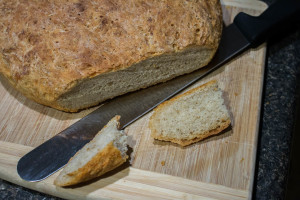This weekend as I was cleaning my Man Cave (really it’s just a musty basement) I walked by the 5 gallon bucket where I throw all the leftover grain from ingredient orders. You know the deal. Partial bags of specialty malts, some crystal 40 here, black patent there. When I saw the bucket, I thought, I better do something with this before all this goes bad. So I sat down to do an inventory. When you inventory your leftover grain be thinking in terms of recipe. Ask yourself, “If I was reading this list of ingredients in a recipe, what style of beer would I be looking at?” If you have English pale malts and some crystal, for example, you may think, “bitter.” You can brew good bitter with either American or English hops, so don’t worry about pairing it up with English hops only. If you are looking at a bunch of Vienna malt (like I was) you may think something along the lines of a Vienna lager (or a faux lager with neutral ale yeast) or some other toasty malty beer.
I had a lot of Vienna, but I had no Munich with which to pair it, so the Oktoberfest was out. I had a few pounds of base grains left from previous batches. I saw some Golden Promise, pilsner, 2 row, various crystal malts, and various and sundry other items. I already have 5 gallons of bitter in the beer fridge, and I have been brewing those a lot lately, so I kept thinking. A quick check of the freezer revealed partial hop packets of Warrior, Horizon, and Amarillo. I had a few full packets of Centennial and Simcoe. It should be obvious what my next thought was. . .IPA, of course.
The guys in the brewing class I am teaching with Jeremy had talked about how much they love IPA. A small batch could probably be ready to drink before the 5 class sessions over the next month and a half end. Since I didn’t have quite enough base grain to to a full 5.5 gallon batch, I quickly scaled down to 3 gallons and improvised a recipe. Here is what I came up with:
4lbs 12 oz Golden Promise
1 lb 5 oz Pilsner
8 oz Crystal 15
4 oz Dark Wheat
3 oz Crystal 40
3 oz 2 Row
3 oz White Wheat
0.2 oz Horison 11.5%AA @ 60 minutes
0.2 oz Warrior 16%AA @60 minutes
0.6 oz Centennial 9.5%AA @ 10 minutes
0.6 oz Simcoe 12.5%AA @ 5 minutes
0.6 oz Amarillo 8.2%AA@ Flameout
Mash at 149F for 90 minutes, 90 minute boil, Safale US-05 Yeast fermented at 67F.
That gave me the following specs in BeerSmith: Batch Size-3 gallons, OG of 1.066, IBU-65, FG of 1.012, ABV-7.1%, 7.6 SRM.
What came next was a frenzy of compiling and crushing all the grains and a quick small batch brew day. While I was at it, I had a Super Bowl gathering to attend later in the day, so I decided I’d dry some of my spent grains and whip up some of Jeremy’s Spent Grain Buttermilk Biscuits that he blogged about here earlier. They would go well with a backwoods Super Bowl party.
Be right back after brewing. . .
Well, sometimes the brew gods give, and sometimes they take away. I missed by original gravity on this recipe by a long way. It was supposed to be 1.066, but I ended up at 1.052. I imagine the small batch size and different equipment profile threw off my BeerSmith calculations. Not to worry, it will just be one of those “session ipas” I keep hearing about. In any case, relax, don’t worry, have a homebrew.
My 90 minute boil may not been vigorous enough, but the volume hit pretty spot on. With the early Mississippi February daytime temperature today at about normal at 57F, and night time temps hitting near freezing, my groundwater is pretty cold. I was able to chill this small 3 gallon batch well below 70F with my copper immersion chiller in no time at all (ok. really about 15 minutes). That’s my favorite thing about winter brewing in the South. Quick chilling but still not bone chilling cold on the patio. There is no way you can chill with an immersion chiller and ground water in under 45 minutes or so in summer time here.
Anyway, I went straight to the fermenter, straight away pitched my US-05 yeast, and then straight to the fermentation chamber. The wort smelled fantastic, and it foreshadows a wonderful “session” IPA. I will let you know how it turns out in a couple of weeks.
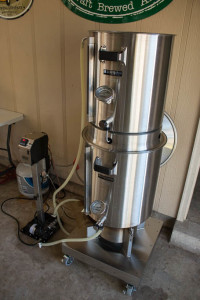 In this post, I am going to discuss my 10 gallon gas fired Blichmann BrewEasy Turnkey system. You are probably wondering why and the hell I even bought it. Well, I’ve been looking to upgrade my brew system to something more automated for some time now. Nailing my mash temperatures has something I’ve always kind of struggled with. I’m always within about two degrees, but I wanted more control and I wanted to be able to do step mashes as well.
In this post, I am going to discuss my 10 gallon gas fired Blichmann BrewEasy Turnkey system. You are probably wondering why and the hell I even bought it. Well, I’ve been looking to upgrade my brew system to something more automated for some time now. Nailing my mash temperatures has something I’ve always kind of struggled with. I’m always within about two degrees, but I wanted more control and I wanted to be able to do step mashes as well.